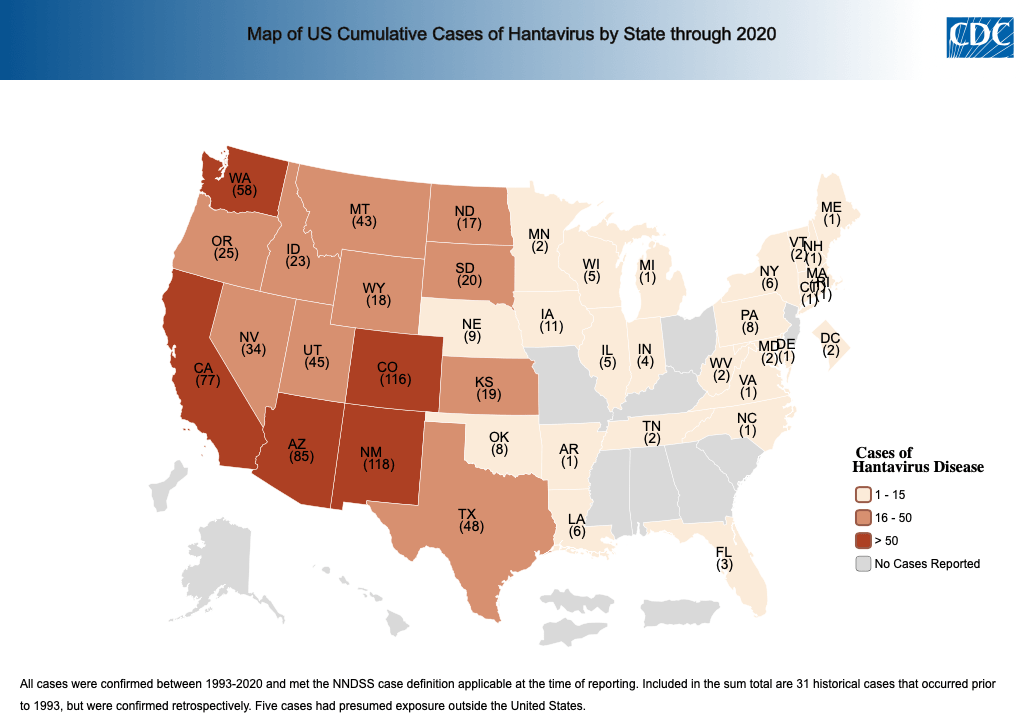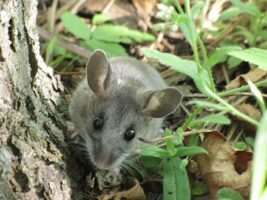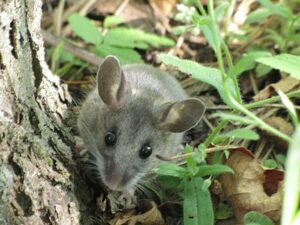As we have written about before in this article, Heads up! These mice droppings can kill you the hantavirus can be found in the USA and transmitted to people who are in close contact with rodent droppings, urine and saliva. Most often it is inhaled while cleaning out an old shed or basement.
Health officials announced Michigan’s first case of the Sin Nombre hantavirus last year, The Detroit Free Press reported. A woman was hospitalized. While not a big threat here in the USA this year, there are other cases creeping towards us from Argentina and Panama.
The CDC had only reported 21 cases of the hantavirus in the US from 1993 through 2018. As of the end of 2020, however, 833 cases of hantavirus disease had been reported! These were all laboratory-confirmed cases and included HPS and non-pulmonary hantavirus infection.
A total of 17 hantavirus cases have been reported in nearby Panama in 2022, of which 12 suffered from hantavirus cardiopulmonary syndrome and five from hantavirus fever. Even Taiwan has reported a case this year. New evidence from the CDC shows that a rat infestation is to blame for a hantavirus outbreak in Washington, D.C. between May and December 2018. Given the rat-infested state of cities like San Francisco and Portland, how long can it be before we see outbreaks there?

Hantaviruses are a family of viruses spread mainly by rodents and can cause varied disease syndromes in people worldwide. Infection with any hantavirus can produce hantavirus disease in people. Hantaviruses in the Americas are known as “New World” hantaviruses and may cause hantavirus pulmonary syndrome (HPS). Other hantaviruses, known as “Old World” hantaviruses, are found mostly in Europe and Asia and may cause hemorrhagic fever with renal syndrome (HFRS).
Each hantavirus serotype has a specific rodent host species and is spread to people via aerosolized virus that is shed in urine, feces, and saliva, and less frequently by a bite from an infected host. The most important hantavirus in the United States that can cause HPS is the Sin Nombre virus, spread by the deer mouse. The disease kills about 40 percent of people that catch it, and can cause “coughing and shortness of breath, with the sensation of, as one survivor put it, a ‘…tight band around my chest and a pillow over my face’ as the lungs fill with fluid,” according to the CDC.
Peromyscus maniculatus is a rodent native to North America. It is most commonly called the Deer Mouse, although that name is common to most species of Peromyscus, and thus is often called the North American deermouse and is fairly widespread across the continent, with the major exception being the southeast United States and the far north.
Like other Peromyscus species, it can be a vector and carrier of emerging infectious diseases such as hantaviruses and Lyme disease.
It is closely related to Peromyscus leucopus, the white-footed mouse.
Recent research results show that many people who became ill with HPS developed the disease after having been in frequent contact with rodents and/or their droppings around a home or a workplace. On the other hand, many people who became ill reported that they had not seen rodents or rodent droppings at all. Therefore, if you live in an area where the carrier rodents are known to live, try to keep your home, vacation place, workplace, or campsite clean.

